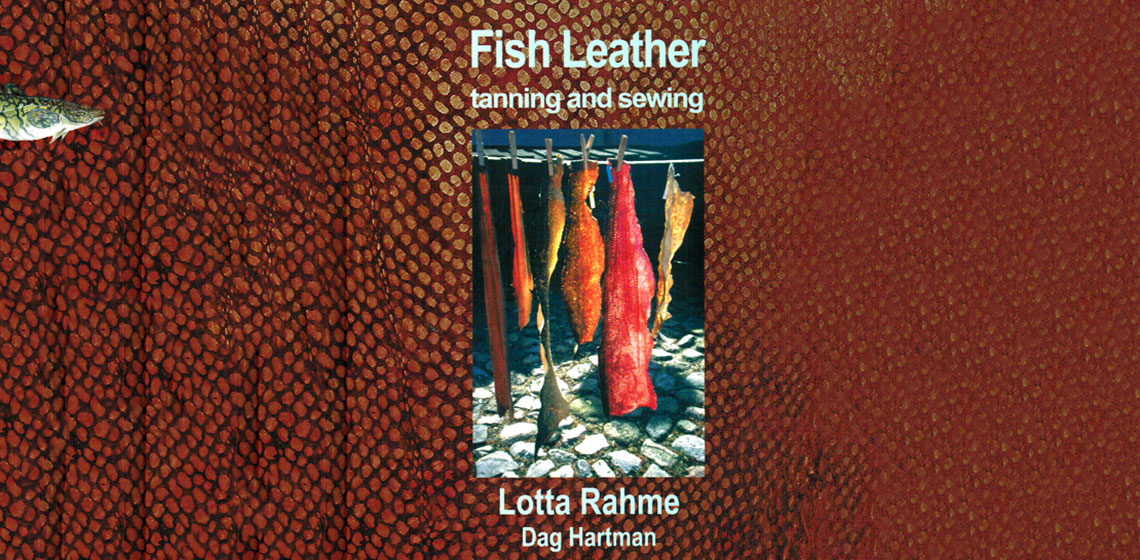
Judging from the extensive bibliography in this book, little to no literature exists on fish leather tanning in English. A quick Google and Amazon search reveals that a good general book on leather tanning includes at least one chapter on fish, reptile and other "alternative" skins. There are also video tutorials on YouTube, but until now there were not any books specifically on fish leather tanning written in English.
A boon for experimental archaeologists and reenactors: Rahme writes mostly about the natural, traditional methods that she prefers to use in her tannery in Sigtuna, Sweden. Such methods are not for the faint-hearted; they can involve the use of brains, manure and urine to name a few, and some ingredients will take time to gather, prepare and "mature.” No wonder that tanning used to be an odoriferous business, banned to the outskirts of town. In other words: don't try this in your kitchen unless you're the only one using it.
"Fish Leather" is a small hardcover book, with 76 pages crammed full of interesting text, attractive photography and clear illustrations. It starts with a short history of the use of fish skins in Asia, Sweden, Iceland, North America and North Africa, followed by a chapter on fish biology in general and the physiology of different kinds of skin written by Hartman. Twenty different kinds of mostly northern European fish that are suited for tanning are extensively described, each with an illustration of the fish and a close-up photograph of its tanned skin.
Then comes the real work: before a fish skin becomes fish leather it must undergo a series of processes, some of which are rather labour intensive while others can take several days. If you want to go about tanning some fish skins yourself it is best to read these chapters completely and then make sure that you have all the necessary ingredients. Salmon skins and spring-harvested oak bark will not be easy to come by for everyone, although Rahme suggests that dried vegetable tanning ingredients can be bought online. The illustrations of the necessary tools are quite clear, and most can be made from simple pieces of wood and household implements.
Rahme discusses several methods of preparing and tanning, and then moves on to dyeing, oiling, maintenance and sewing techniques. Three simple sewing projects are described, with templates. She then discusses some of her experiments with tanning and dyeing as well as her ideas about the future of fishing, sustainability and fish leather tanning. A gallery of beautiful projects and an elaborate salmon recipe from the local hotel finish things off on a delicious note.
Being the only book exclusively on this subject it certainly fills a gap, but there is also room for improvement in this self-published work. The layout is a bit unconventional and crowded in places, and a next edition would benefit from the work of an experienced editor. The list of endangered and sustainably caught and farmed fish might be better placed in the back as an appendix, however important the information, and a glossary of tanning and fish-related terms could be useful for beginners. This book has certainly peaked my interest however, and the next time I buy or catch some fresh fish I'll make sure to carefully remove the skin and keep it in the freezer for things to come.
Book information:
RAHME, Lotta, HARTMAN, Dag, 2012, Fish leather tanning and sewing, Lotta's Garfveri www.lottastannery.se, 76 pp.
ISBN: 978 91 637 1661 4